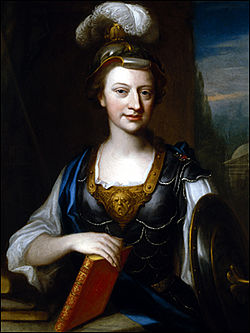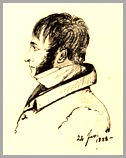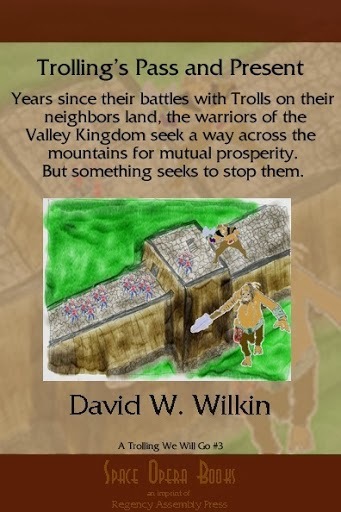D.W. Wilkin's Blog, page 22
October 9, 2016
Regency Personalities Series-Edward Strutt 1st Baron Belper
Regency Personalities Series
In my attempts to provide us with the details of the Regency, today I continue with one of the many period notables.
Edward Strutt 1st Baron Belper
26 October 1801 – 30 June 1880
Edward Strutt 1st Baron Belper was born at St Helen’s House Derby, Strutt was the only son of William Strutt, of St Helen’s House, Derbyshire, and the grandson of Jedediah Strutt. His mother was Barbara, daughter of Thomas Evans. He was educated at Trinity College, Cambridge, where he was President of the Cambridge Union in 1821. Strutt graduated as a Bachelor of Arts in 1823, promoted to Master of Arts three years later.
Strutt entered the British House of Commons in 1830, sitting as Member of Parliament for Derby until 1848, when he was unseated on petition. He represented Arundel from 1851 to 1852 and Nottingham from 1852 to 1856.He was Chief Commissioner of Railways between 1846 and 1848 and served as Chancellor of the Duchy of Lancaster from 1853 to 1854 in Lord Aberdeen’s coalition government. He was sworn of the Privy Council in 1846 and in 1856 he was raised to the peerage as Baron Belper, of Belper, in the County of Derby.
Strutt also held the honorary posts of High Sheriff of Nottinghamshire in 1850 and Lord Lieutenant of Nottinghamshire between 1864 and 1880, having been previously a Deputy Lieutenant. In 1860 he was elected a Fellow of the Royal Society and between 1871 and 1879, he was President of University College, London.
Lord Belper married Amelia Harriet Otter, daughter of the Right Reverend William Otter, Bishop of Chichester, on 28 March 1837. They had several children. They were the parents of Henry Strutt, 2nd Baron Belper.
Children from the marriage were:
Hon. Caroline Strutt (d. 23 Jul 1926) married Sir Kenelm Edward Digby, son of Rev. Hon. Kenelm Henry Digby and Caroline Sheppard, on 30 August 1870.
Hon. Ellen Strutt (d. 31 Dec 1940) married George Murray Smith the Younger on 22 October 1885.
Hon. Sophia Strutt (d. 2 Dec 1928) married Sir Henry Denis Le Marchant, 2nd Baronet., son of Sir Denis Le Marchant, 1st Baronet, on 7 September 1869.
William Strutt (7 May 1838 – 19 Jan 1856) died in Bonn, Germany.
Henry Strutt, 2nd Baron Belper (20 May 1840 – 26 Jul 1914)
Hon. Arthur Strutt (3 Mar 1842 – 6 Feb 1877) married Alice Mary Elizabeth March Phillipps de Lisle, daughter of Ambrose Lisle March Phillipps De Lisle and Laura Maria Clifford, on 22 April 1873.
He built his family seat, Kingston Hall, Nottinghamshire and moved in 1846.
Lord Belper died at Eaton Square, Belgravia, London, in June 1880, aged 78, and was succeeded in the barony by his second but eldest surviving son, Henry. A stained glass window was erected in the north side of the chancel in St. Mary’s Church, Nottingham in his memory. Lady Belper died in December 1890.


RAP (Regency Assembly Press) in need of Beta-Readers
Regency Assembly
Press
is looking for
Beta Readers
One novel is ready for Beta Reading
We have a continuation of Pride and Prejudice with Ms Caroline Bingley and her fortune at stake:
Do we think that Mr Hurst married his Bingley Bride without incentive? It is highly probable that Caroline Bingley, even though she has a sharp, acerbic tongue, still is in possession of a fortune and an astute fortune hunter who deciphers this may soon be on the road to, if not a happy marriage, one with financial security.
Please respond or send an email if you are interested


Space Opera Books Presents Trolling, Trolling, Trolling Fly Hides
Trolling, Trolling, Trolling Fly Hides!
Not only do I write Regency and Romance, but I also have delved into Fantasy.
The Trolling series, (the first three are in print) is the story of a man, Humphrey. We meet him as he has left youth and become a man with a man’s responsibilities.
We follow him in a series of stories that encompass the stages of life. We see him when he starts his family, when he has older sons and the father son dynamic is tested.
We see him when his children begin to marry and have children, and at the end of his life when those he has loved, and those who were his friends proceed him over the threshold into death. All this while he serves a kingdom troubled by monsters.
Troubles that he and his friends will learn to deal with and rectify.
It is now available in a variety of formats. For $2.99 you can get this fantasy adventure.

Barnes and Noble for your Nook
Old age is catching up to Humphrey and his friends. He feels it in his bones and with his son and heir having reached the prime of his life, it could very well be time to pass the baton of rule to Daniel.With the Valley Kingdom of Torahn at Peace, that would not be a terrible thing to do. Though breaking his decision to his wife Gwendolyn, the Queen, might be the hardest battle that he ever would fight.
Even as the life of retirement looks to be attractive and possible, however, the Valley Kingdom is beset again. Not Goblins, Trolls, Giants or Men, this time. No. That Humphrey knew would be far too easy.
Those obstacles had been overcome before and the problems they presented had solutions that the army of Torahn was trained to deal with. No, of all the creatures that came forth from Teantellen that they had beaten, the one they had never faced now came forth. Dragons!
Who in the realm knew how to fight these mythical beasts? Was there even away to do so?
Now Humphrey who had thought to spend the remainder of his days quietly writing his memoirs and drinking, was faced with the greatest challenge he had ever known.
Feedback
If you have any commentary, thoughts, ideas about the book (especially if you buy it, read it and like it
October 8, 2016
Regency Personalities Series-Elizabeth Carter
Regency Personalities Series
In my attempts to provide us with the details of the Regency, today I continue with one of the many period notables.
Elizabeth Carter
16 December 1717 – 19 February 1806

Elizabeth Carter
Elizabeth Carter was born in Deal, Kent, Elizabeth Carter was the oldest child of Rev. Nicolas Carter, perpetual curate of Deal, and his first wife Margaret (died c. 1728), only daughter and heir of Richard Swayne of Bere Regis, Dorset, who died when Elizabeth was ten. Her redbrick family home can still be seen at the junction of South Street and Middle Street, close to the seafront. Encouraged by her father to study, she mastered several modern and ancient languages (including Latin, Greek, Hebrew, and Arabic) and science.
Carter rendered into English De Crousaz’s Examen de l’essai de Monsieur Pope sur l’homme (Examination of Mr Pope’s “An Essay on Man”, two volumes, 1739); Algarotti’s Newtonianismo per le dame (Newtonianism for women); and wrote a small volume of poems. Carter’s position in the pantheon of 18th-century women writers was, however, secured by her translation in 1758 of All the Works of Epictetus, Which are Now Extant, the first English translation of all known works by the Greek stoic philosopher. This work made her name and fortune, securing her a spectacular £1000 in subscription money.
Carter was a friend of Samuel Johnson, editing some editions of his periodical The Rambler. He wrote, “My old friend, Mrs. Carter could make a pudding as well as translate Epictetus from the Greek and work a handkerchief as well as compose a poem.”
Carter was friends with many other eminent people, as well as being a close confidant of Elizabeth Montagu, Hannah More, Hester Chapone, and other members of the Bluestocking circle. Anne Hunter, a minor poet and socialite, and Mary Delany are also noted as close friends. The novelist Samuel Richardson included Carter’s poem “Ode to Wisdom” in the text of his novel Clarissa (1747–48) without ascribing it to her. It was later published in a corrected form the Gentleman’s Magazine and Carter received an apology from Richardson.
Carter appeared in the engraved (1777) and painted (1778) versions of Richard Samuel’s The Nine Living Muses of Great Britain (1779) but the figures in the painting were so idealised that she complained she could not identify herself or anyone else in the work. Samuel had not done any sittings from life when preparing the work.
Fanny Burney is quoted in Boswell’s Life of Samuel Johnson as saying in 1780 she thought Carter “a really noble-looking woman; I never saw age so graceful in the female sex yet; her whole face seems to beam with goodness, piety, and philanthropy.” However, Betsey Sheridan, sister of the playwright, described her five years later in her diary as “rather fat and not very striking in appearance”.
Carter kept an interest in religious matters. She was influenced by Hester Chapone, and she wrote apologetic treatises of the Christian faith, asserting the authority of the Bible over human matters. One of these works, known as Objections against the New Testament with Mrs. Carter’s Answers to them and was published in the compilation of writings Memoirs of the Life of Mrs. Elizabeth Carter by Montagu Pennington, which also included her Notes on the Bible and the Answers to Objections concerning the Christian Religion. Her deep belief in God is also reflected in her poems “In Diem Natalem” and “Thoughts at Midnight” (also known as “A Night Piece”).
Elizabeth Gaskell, the 19th-century novelist, refers to Carter as an epistolatory model, bracketing her in Cranford with Hester Chapone, a self-taught Bluestocking.
Virginia Woolf saw her as a feminist precursor – urging “homage to the robust shade of Eliza Carter – the valiant old woman who tied a bell to her bedstead in order that she might wake early and learn Greek.”


An Unofficial Guide to how to win the Scenarios of Wild the 2nd Expansion for Rollercoaster Tycoon 3
An Unofficial Guide to how to win the Scenarios of Wild
I have been a fan of this series of computer games since early in its release of the very first game. That game was done by one programmer, Chris Sawyer, and it was the first I recall of an internet hit. Websites were put up in dedication to this game where people showed off their creations, based on real amusement parks. These sites were funded by individuals, an expense that was not necessarily as cheap then as it is now. Nor as easy to program then as it might be to build a web page now.
Prima Books released game guides for each iteration of the game, Rollercoaster Tycoon 1, Rollercoaster Tycoon 2 and Rollercoaster Tycoon 3 (RCT3) but not for the expansion sets. And unlike the first two works, the third guide was riddle with incorrect solutions. As I played the game that frustrated me. And I took to the forums that Atari, the game publisher hosted to see if I could find a way to solve those scenarios that the Prima Guide had written up in error. Not finding any good advice, I created my own for the scenarios that the “Official” Guide had gotten wrong.
Solutions that if you followed my advice you would win the scenario and move on. But if you followed the “Official” version you would fail and not be able to complete the game. My style and format being different than the folks at Prima, I continued for all the Scenarios that they had gotten right as well, though my solutions cut to the chase and got you to the winner’s circle more quickly, more directly.
My contributions to the “Official” Forum, got me a place as a playtester for both expansions to the game, Soaked and Wild. And for each of these games, I wrote the guides during the play testing phase so all the play testers could solve the scenarios, and then once again after the official release to make changes in the formula in case our aiding to perfect the game had changed matters. For this, Atari and Frontier (the actual programmers of the game) placed me within the game itself.
And for the longest time, these have been free at the “Official” Forums, as well as my own website dedicated to the game. But a short time ago, I noticed that Atari, after one of its bankruptcies had deleted their forums. So now I am releasing the Guide for one and all. I have added new material and it is near 100 pages, just for the first of the three games. It is available for the Kindle at present for $2.99.
(Click on the picture to purchase)
Not only are all 12 Scenarios covered, but there are sections covering every Cheat Code, Custom Scenery, the famous Small Park Competition, the Advanced Fireworks Editor, the Flying Camera Route Editor which are all the techniques every amusement park designer needs to make a fantastic park in Rollercoaster Tycoon 3.
Scenarios for WILD!
1) Scrub Gardens
2) Ostrich Farms Plains
3) Egyptian Sand Dance
4) A Rollercoaster Odyssey
5) Zoo Rescue
6) Mine Mountain
7) Insect World
8) Rocky Coasters
9) Lost Land of the Dinosaurs
10) Tiger Forest
11) Raiders of the Lost Coaster
12) Saxon Farms


October 7, 2016
Regency Personalities Series-Gardens at Kew Park
Regency Personalities Series
In my attempts to provide us with the details of the Regency, today I continue with one of the many period notables.
Gardens at Kew Park
1299-
Gardens at Kew Park. While the actual Kew Gardens became a national site in 1840, its origins are from much earlier.
Kew, the area in which Kew Gardens are situated, consists mainly of the gardens themselves and a small surrounding community. Royal residences in the area which would later influence the layout and construction of the gardens began in 1299 when Edward I moved his court to a manor house in neighbouring Richmond (then called Sheen). That manor house was later abandoned; however, Henry VII built Sheen Palace in 1501, which, under the name Richmond Palace, became a permanent royal residence for Henry VII. Around the start of the 16th century courtiers attending Richmond Palace settled in Kew and built large houses. Early royal residences at Kew included Mary Tudor’s house, which was in existence by 1522 when a driveway was built to connect it to the palace at Richmond. Around 1600, the land that would become the gardens was known as Kew Field, a large field strip farmed by one of the new private estates.
The exotic garden at Kew Park, formed by Lord Capel John of Tewkesbury, was enlarged and extended by Augusta, Dowager Princess of Wales, the widow of Frederick, Prince of Wales. The origins of Kew Gardens can be traced to the merging of the royal estates of Richmond and Kew in 1772. William Chambers built several garden structures, including the lofty Chinese pagoda built in 1761 which still remains. George III enriched the gardens, aided by William Aiton and Sir Joseph Banks. The old Kew Park (by then renamed the White House), was demolished in 1802. The “Dutch House” adjoining was purchased by George III in 1781 as a nursery for the royal children. It is a plain brick structure now known as Kew Palace.
Some early plants came from the walled garden established by William Coys at Stubbers in North Ockendon. The collections grew somewhat haphazardly until the appointment of the first collector, Francis Masson, in 1771. Capability Brown, who became England’s most renowned landscape architect, applied for the position of master gardener at Kew, and was rejected.


Fantasy from Space Opera Books, Trolling’s Pass and Present
Trolling’s Pass and Present
Not only do I write Regency and Romance, but I also have delved into Fantasy. The Trolling series, (the first three are in print) is the story of a man, Humphrey.
We meet him as he has left youth and become a man with a man’s responsibilities. We follow him in a series of stories that encompass the stages of life.
We see him when he starts his family, when he has older sons and the father son dynamic is tested. We see him when his children begin to marry and have children, and at the end of his life when those he has loved, and those who were his friends proceed him over the threshold into death.
All this while he serves a kingdom troubled by monsters. Troubles that he and his friends will learn to deal with and rectify.
It is now available in a variety of formats. For $2.99 you can get this fantasy adventure.
Barnes and Noble for your Nook
Years since their battles with the Trolls, even on foreign soil, the warriors of the Valley Kingdom of Torahn need something to keep their edge honed.
The economy too is beginning to fray a little without the great wars to support. The Leaders hit upon the idea of searching for a path to reach the east side of the continent.
The Elves swear that at one time their writings tell of such, the Dwarves swear such a pass across Teantellen is legendary. Teantellen though is filled with races man has never gotten along with well. Goblins, Dark Elves, Trolls, Giants and Dragons.
It has been years since the mountain tops exploded, and perhaps that has changed things enough that a way can be found to link the western lands with the eastern lands and increase trade, and prosperity for all. Even should they fail in their quest, as the history of man has shown to this point in time, the attempt will do much to spur the economy.
Tens of thousands of gold will be spent by the Council of Twenty-One to pay for such an expedition. Gold that those who are not so scrupulous might choose to pocket as they tried in the Troll Wars.
With such shenanigans taking place again, are the hopes of the previous generation, the leaders from the Troll Wars now in retirement, ready to be achieved? Is it time for Torahn, called the Valley Kingdom, but the only Kingdom without a King, to have a King once more?
Feedback
If you have any commentary, thoughts, ideas about the book (especially if you buy it, read it and like it
October 6, 2016
Regency Personalities Series-Major General Sir William Erskine 2nd Baronet
Regency Personalities Series
In my attempts to provide us with the details of the Regency, today I continue with one of the many period notables.
Major General Sir William Erskine 2nd Baronet
30 March 1770 – 1813
Major General Sir William Erskine 2nd Baronet was commissioned into the 23rd foot 1785, and transferred to the 5th Dragoons as a lieutenant in 1787, and in 1791 became captain of the 15th King’s Light Dragoons (the unit his father had served in with distinction) on 23 February 1791. His first active service was in Flanders 1793–95, during the French Revolutionary Wars, when he acted as aide-de-camp to his father. In 1794 he was made lieutenant-colonel. and fought at the Battle of Villers-en-Cauchies, where a handful of English and Austrian cavalry routed a much larger force of French infantry and cavalry.
On his father’s death in 1795, Erskine became baronet. He represented Fife in Parliament in 1796 and 1802–1805. Despite being “blind as a beetle”, according to a fellow officer, in 1808, Erskine received promotion to major general. When he heard Erskine was being shipped to Portugal, Wellington complained that he “generally understood him to be a madman.” The administrators of the army at Horse Guards responded that, “No doubt he is sometimes a little mad, but in his lucid intervals he is an uncommonly clever fellow; and I trust he will have no fit during the campaign, though he looked a little wild as he embarked.”
During the 1811 campaign in Portugal, Erskine took over the command of the famous Light Division in the absence of Robert Craufurd. He soon developed a reputation for rashness. Wellington wrote, “It is impossible to trust to his judgment in any critical case.”
While pursuing Marshal Andre Massena’s retreating French army, several sharp actions were fought at Pombal, Redinha, Casal Novo and Foz do Arouce between the Light Division and Marshal Michel Ney’s rearguard. At Casal Novo on 14 March 1811, Erskine advanced his men along the main road in fog without proper scouts. When the fog suddenly cleared, his leading elements found themselves facing elements of Jean Marchand’s division deployed in line with artillery support. This carelessness cost the Light Division 155 killed and wounded, while Marchand lost only 55 men.
At the Battle of Sabugal, the fog and Erskine’s bungling saved General Jean Reynier’s isolated French corps from destruction. Wellington assigned Erskine with the Light Division and some cavalry to cut in behind Reynier’s open left flank while four divisions attacked in front. The hapless Erskine, who was very nearsighted, issued a set of foolish orders then promptly got lost in the fog with the cavalry. The leaderless Light Division covered itself with glory in the subsequent action, but the French escaped from Wellington’s trap.
During the Battle of Fuentes de Onoro, Erskine’s 5th and Alexander Campbell’s 6th Divisions covered the Siege of Almeida. After the French relief army was turned back, the French garrison slipped out of the fortress in the night and marched straight through the blockading force to freedom. On this occasion, an exasperated Wellington said, “I have never been so distressed by any military event as by the escape of even a man of them.” This time Erskine was only one of several officers who blundered. Aware that he could not dismiss Erskine because of the man’s political influence, Wellington tried to place Erskine in positions where he could do little damage.
From 19 June 1811, Erskine led four mounted regiments in the newly organized 2nd Cavalry Division in Rowland Hill’s corps. He soon relinquished command, but reassumed his post on 8 April 1812. Soon after, he was declared insane and cashiered. He took his own life in Lisbon in 1813 by jumping out of a window, reportedly with the last words, “Now why did I do that?”.


RAP has The Shattered Mirror, A Regency Romance
The Shattered Mirror
For your enjoyment, one of the Regency Romances I published. It is available for sale and now at a reduced price of $3.99, and I hope that you will take the opportunity to order your copy.
Order for yourself or as a gift. It is now available in a variety of formats. For just a few dollars this Regency Romance can be yours for your eReaders or physically in Trade Paperback.
Barnes and Noble for your Nook
and in Trade Paperback
Bridget Halifax-Stokes was giddy with the excitement of her Season in London. Town had beckoned and her Season came on the heels of the end of the war against the tyrant. All the handsome men were returning heroes. What better year to come out?
Her father thought it all nonsense. Her mother believed that it would be the best showing of any of her daughters. More lords now available and the family’s luck that Bridget was just the perfect age.
All is fun and frivolity for Bridget until she literally crashes into Sir Patrick Hampton as he limps along the High Street. A man she knew once well from her childhood, now a stranger with dark and foreboding eyes. Eyes that had seen more than any man’s share of the war.
Feedback
If you have any commentary, thoughts, ideas about the book (especially if you buy it, read it and like it
October 5, 2016
Regency Personalities Series-Edward Dodwell
Regency Personalities Series
In my attempts to provide us with the details of the Regency, today I continue with one of the many period notables.
Edward Dodwell
30 November 1767 – 13 May 1832

Edward Dodwell
Edward Dodwell was born in Ireland and belonged to the same family as Henry Dodwell, the theologian, and was educated at Trinity College, Cambridge.
Dodwell travelled from 1801 to 1806 in Greece, which was then a part of the Ottoman Empire, and spent the rest of his life for the most part in Italy, at Naples, and Rome. He died at Rome from the effects of an illness contracted in 1830 during a visit of exploration to the Sabine Mountains. Dodwell’s widow, a daughter of Count Giraud, thirty years his junior, subsequently became famous as the “beautiful” countess of Spaur, and played a considerable role in the political life of the papal city.
Dodwell published A Classical and Topographical Tour through Greece (1819), of which a German translation appeared in 1821; Views in Greece, with thirty colored plates (1821); and Views and Descriptions of Cyclopian or Pelasgic Remains in Italy and Greece (London and Paris, with French text, 1834).








